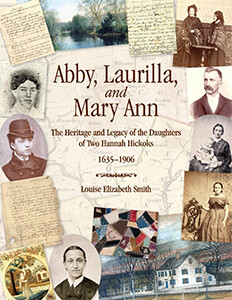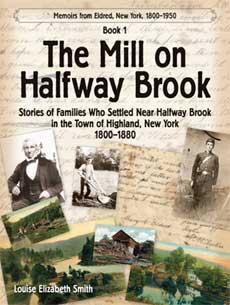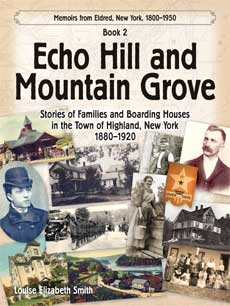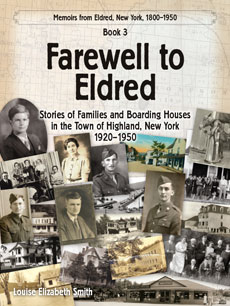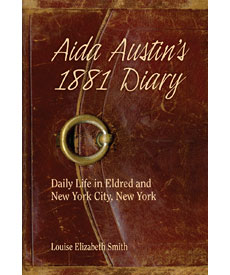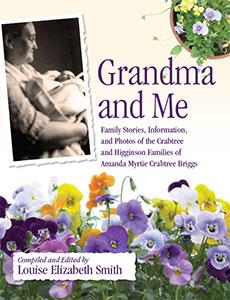
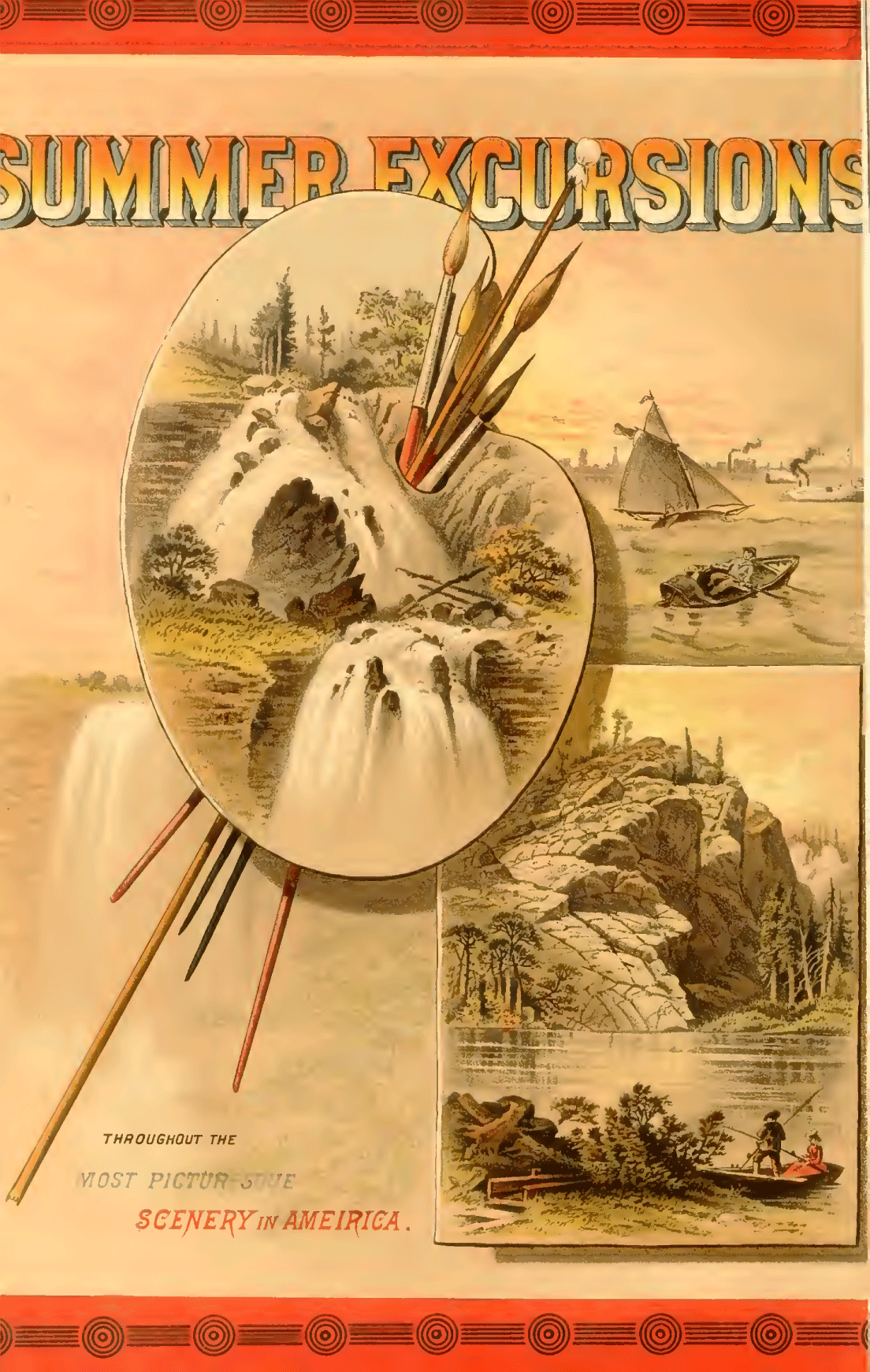
Erie Train, Callicoon, 1874
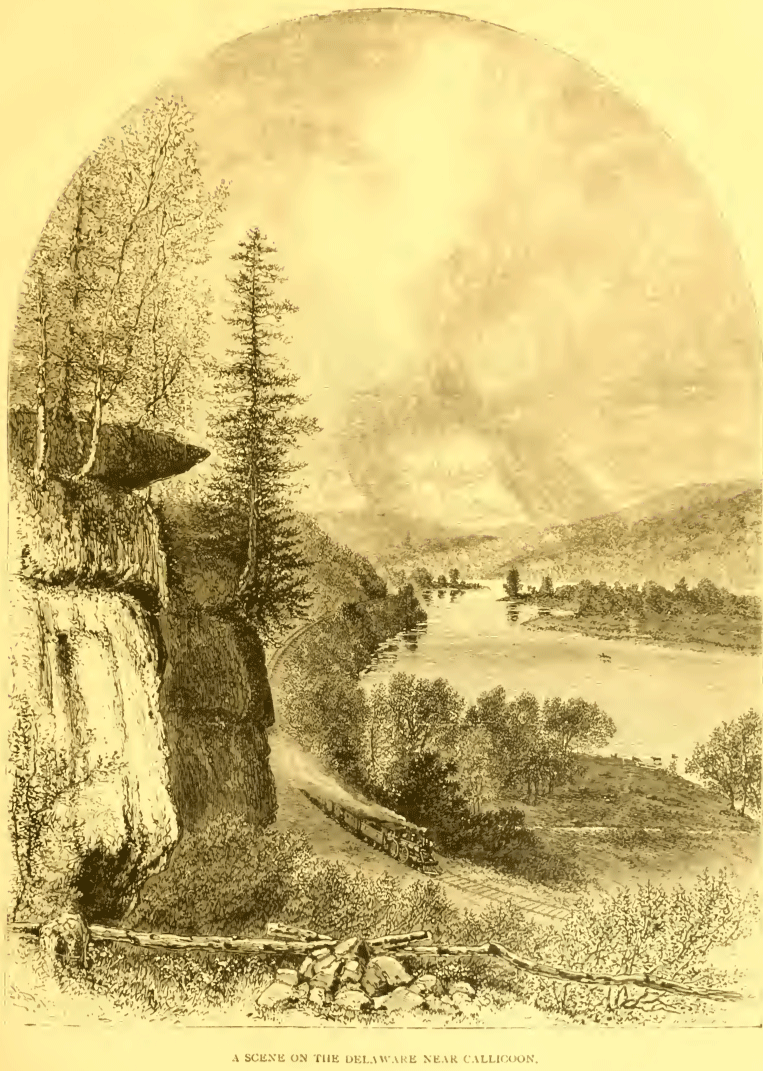
“After leaving Lackawaxen you continue to follow the course of the Delaware in its tortuous and picturesque windings among the mountains, and are ever greeted with new and charming scenes, at some places intensely interesting.
“At Callicoon, where the train next stops, a scene of remarkable beauty occurs, which is only equalled by that of the famous Starucca Viaduct, which you witness after leaving Hancock and Deposit, and when near Susquehanna, at which last-named station the train stops for dinner. Continue reading
Bridge at Narrowsburg, 1874
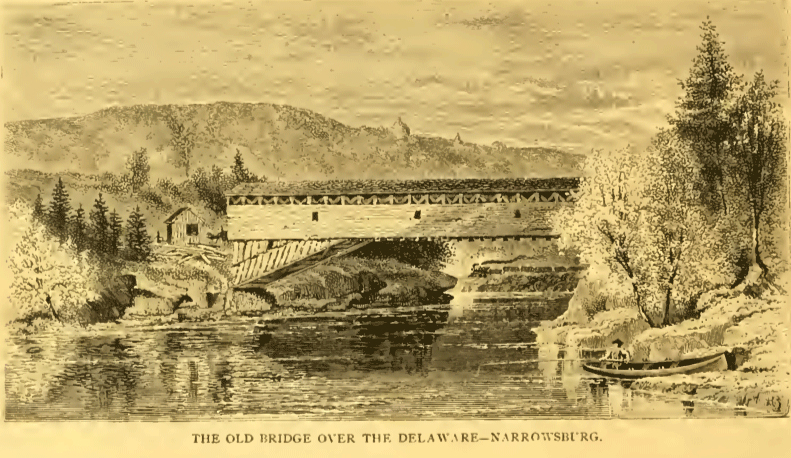
“Here the artist has sketched an old-fashioned country scene in one of the wildest portions of the Delaware Valley traversed by the Erie Railway.
“The old covered bridge is of a style frequently seen in that region, which, by the way, is the scene of many of the most stirring incidents in Fenimore Cooper’s famous novel, The Last of the Mohicans.”
—The Erie Railway Tourist, 1874, p. 6.
1874 Aqueduct at Lackawaxen
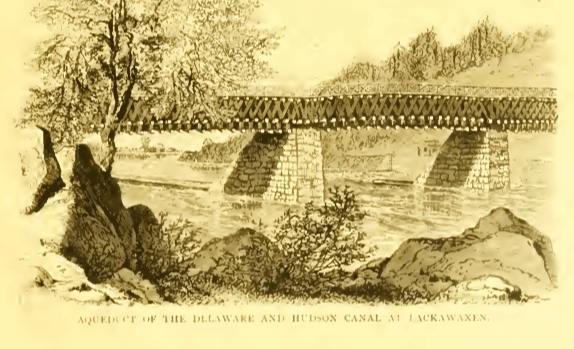
It is at Lackawaxen that the Delaware and Hudson Canal, connecting the coal regions of Pennsylvania with the Hudson at Kingston, crosses the Delaware River, spanning it by an aqueduct, as represented in the accompanying engraving.—The Erie Railway Tourist, 1874, p. 7.
A Water Tank on the Erie
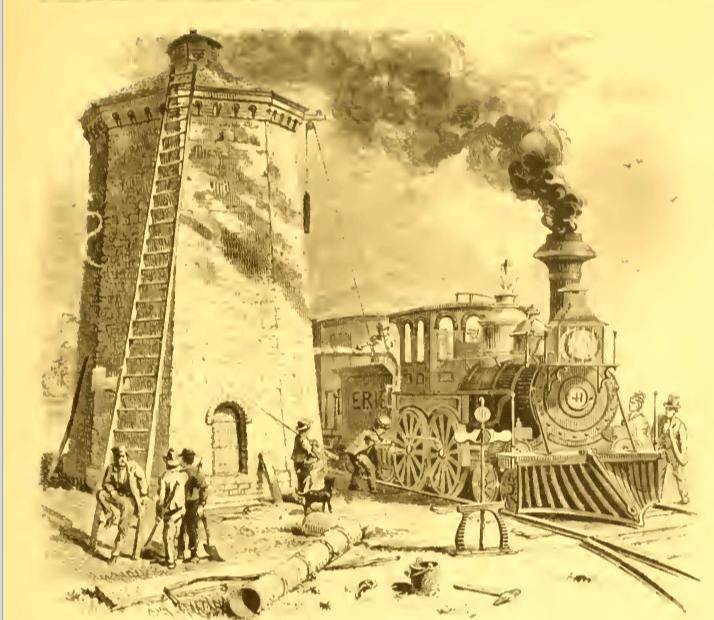
The rapidity and voracity with which the iron horse quenches his thirst from one of these enormous goblets which, brimming full, await him at various intervals on his wild careering across the country, are all but incredible to those who have not seen him partaking.
Parched and thirsty, he pauses for a moment or two to refresh himself with the cooling torrent which pours itself into his enormous jaws at a fearful rate, when lo! before apparently all the passengers have alighted or embarked, his thirst is slaked and he is off again.—The Erie Railway Tourist, 1874, p. 9.
1874 Erie Railway Tourist
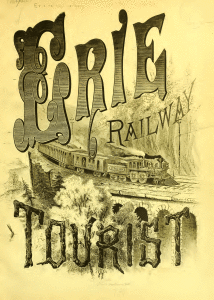
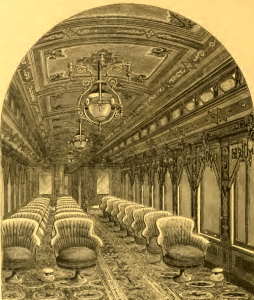
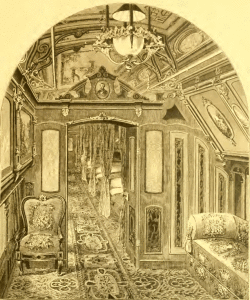
The next post series features images and ads from the Erie Railway brochures, 1874 to 1889.
“The train speeds over the landscape, along mountain sides, through valleys, over bridges, and across broad meadow lands with the speed of a winged charger, pausing only at long intervals, and then pushing on again farther than before, seemingly grudging its few lost moments of unavoidable delay.
“The traveler meanwhile ensconced in his cosy drawing-room or easy-chair, protected from dust and cinders, looks out upon the rapidly-changing landscape with undisguised delight as in a varied picture of town, city, hamlet, forest, and farm-land it passes before him.
“Here, from amid all the luxurious surroundings of a first class hotel, he looks out alike upon nature’s wildest haunts and the cultivated homes of man, and wonders the while at the changes and improvements that man’s genius and energy have wrought. Hour after hour brings him many miles nearer his goal, and lo ere daylight has departed the wonderful journey has been accomplished.
“It has been to him one continued, unwearying scene of entertainment and enjoyment…”—The 1874 Erie Railway Tourist, pp. 20–1.
“There is no Railway Company in the country which provides better accommodations for its patrons, or which keeps its passenger equipment in better condition, than the Erie Railway.
“The Drawing-room and Sleeping Coaches which are attached to Express trains, both west and east, are, as is shown in the illustrations given, perfect paragons of beauty and models of comfort and luxury.
“Indeed, the entire passenger equipment of the Erie Railway is unsurpassed, and contributes in no small degree to the wonderful growth and increase of its passenger traffic.”—The 1874 Erie Railway Tourist, p. 21.
Dr. de Venoge and Round Pond

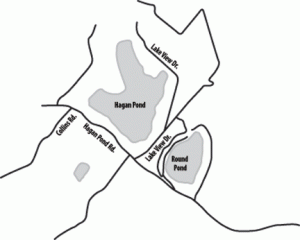
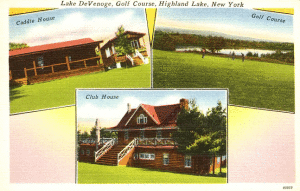

Round Pond
Southeast of Hagan Pond (today’s Highland Lake) was Round Pond (now Lake DeVenoge), a lake fed entirely by underground springs, and 60 to 80 feet deep at the center.
The de Venoge family from Epernay, France was listed in the 1855 census. They had plans for a vineyard in the area, but the climate did not cooperate.
Dr. Leon de Venoge encouraged people that the area would be helpful for those with tuberculosis, and ended up owning quite a bit of property.
Dr. de Venoge provide some type of medication for Emma Austin who had consumption/tuberculosis and eventually moved to Kansas to be with her brothers in hopes that the drier climate would help.
Sometime after 1916, a golf course was created on what had been Dr. de Venoge’s land. The golf course played a part in World War II.—The Mill on Halfway Brook, Chapter 7, p. 83.
Dr. Leon, his wife Catherine, and daughter Mary lived on over 1,000 acres. They had three servants and a boarder, in 1880. The de Venoge Mountain Lake Boarding House was advertised as early as 1885.
The DeVenoge’s Boarding House
• Boarding Houses 1885–1889
L. de Venoge, M.D., Eldred, N.Y. 7 miles from Shohola; transportation $1.60 double rooms; adults $8 to $12; servants $8; discount for season. Good fishing; boats free. Continue reading
John A. Roebling, 1806–1869
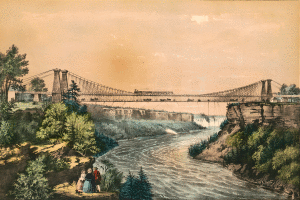

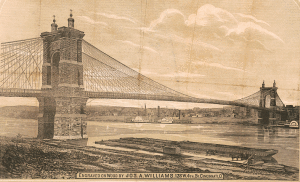


His government job of four years involved designing military roads and supervising their construction. He had also sketched suspension bridges that were never built.
In 1837 Mr. Roebling worked on projects to improve river navigation, in Pennsylvania. Realizing that hemp ropes were expensive and needed to be replaced often, John developed a seven-strand wire rope, which he began producing in 1841.
In 1848 when John Roebling began construction of four suspension aqueducts on the Delaware River for the D&H Canal, he moved to Trenton, New Jersey, and built John A. Roebling’s Sons Company, a large industrial complex for wire production.
In 1851 John Roebling designed a bridge that stretched over the Niagara River with two levels.
The railroad level connected the New York Central with Canada’s Great Western Railway. The other level was for vehicles.
The bridge, which spanned 825 feet and was supported by four, ten-inch wire cables, took four years to build.
In 1856 Roebling started a bridge over the Ohio River at Cincinnati. Due to lack of finances it was another seven years before work continued on the suspension bridge which spanned 1,057 feet from Cincinnati, Ohio to Covington, Kentucky. The bridge opened on December 1, 1866.
For more about his many projects, see John A. Roebling in Wikipedia.
Related information
Roebling Museum
East River Suspension Bridge
Caisson Sickness
Maine’s Androscoggin Swinging Bridge
The Roebling Aqueduct: Build the Canal Above the River
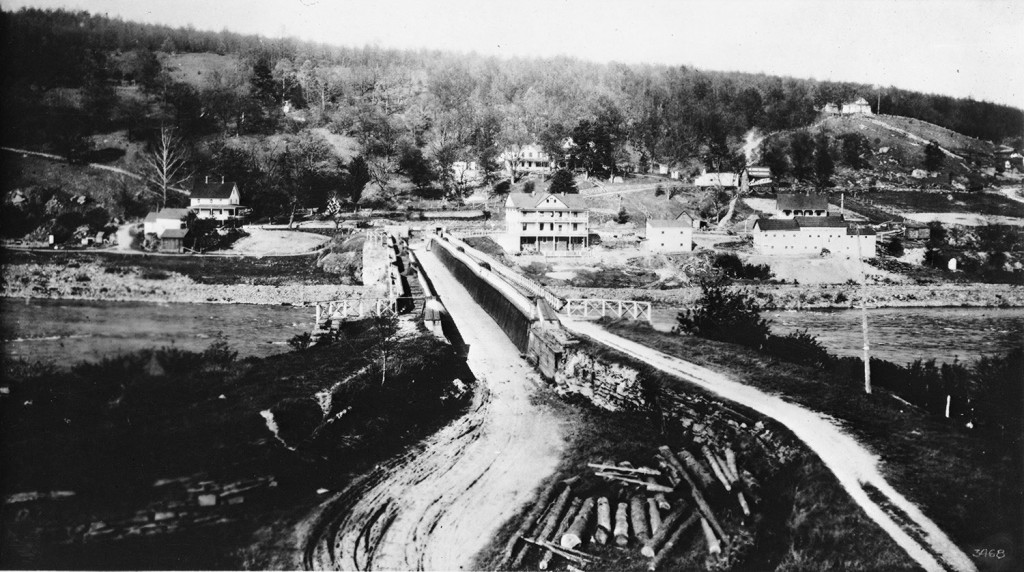
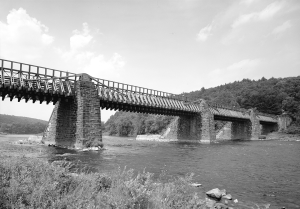

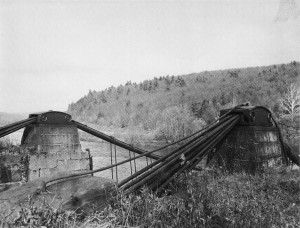
In 1845 Lumberland was home to hunters, tanners, lumberjacks, timber rafters, canal related workers, as well as shoemakers, blacksmiths, wagonmakers, carpenters, and any other job necessary in a town.
The D&H Canal had brought more people to the area. By 1845, summer boarders and sportsmen started to arrive.
But there was a major problem at Lackawaxen, where numerous collisions often occurred between the D&H Canal traffic and the timber rafts floating down the Delaware River.
In 1847 the D&H Canal Company approved suspension designs submitted by John A. Roebling who had already built a wire suspension aqueduct at Pittsburgh in 1845.
Roebling’s designs allowed adequate space for the passage of ice floes and river traffic. (John A. Roebling, twenty years later, designed the Brooklyn Bridge.)
One of the four Roebling Aqueducts on the Delaware River, crossed the 535 feet from Minisink Ford, New York, to Lackawaxen, Pennsylvania.
An immediate success, the $41,750 Delaware Aqueduct and the $18,650 Lackawaxen Aqueduct reduced canal travel time by one full day, saving thousands of dollars annually.
Roebling Bridge Collection with more links
1998 Roebling Bridge
The Mill on Blind Pond Brook

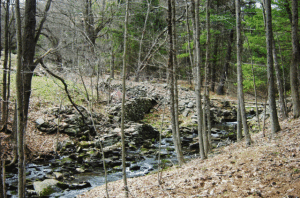
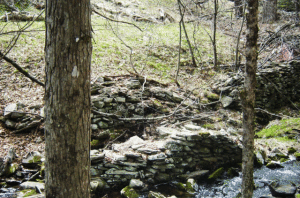

Five miles northwest of Halfway Brook Village was Beaver Brook (sometimes called Beaver Brook Mills), where James K. Gardner supervised a lumbering operation for St. John and Dodge.
James K., his wife Eliza Eldred, and their three children lived in the area in 1836.
Between Beaver Brook Mills and Halfway Brook Village, was Blind Pond, which had a brook of the same name. A mile or so southeast of Blind Pond was a sawmill powered by Blind Pond Brook.
Visible from the sawmill was a bunkhouse built by a lumber company (perhaps the nearby St. John-Dodge operation), as living quarters for the lumberjacks that worked for them.
Sherman B., or Buckley, as Sherman Buckley Leavenworth was called, was one of those lumberjacks. Buckley and his wife Charlotte Ingram were in Halfway Brook Village at least by 1835.
Charlotte, according to the family story, was the cook for the lumberjacks who lived in the bunkhouse.
The early bunkhouses for lumbermen were small with dirt floors. Their later living quarters were usually in a larger building.
The ground floor contained a room for the cook (who could be a woman, as in the case of my great-great-grandmother Charlotte Ingram Leavenworth), and a dining room. Meals were served on long board tables, and the crew were only allowed in the room at meal time. A “men’s room” was at the end of the room where the crew could relax, read, grind their axes, or tell stories in the evening. Continue reading


